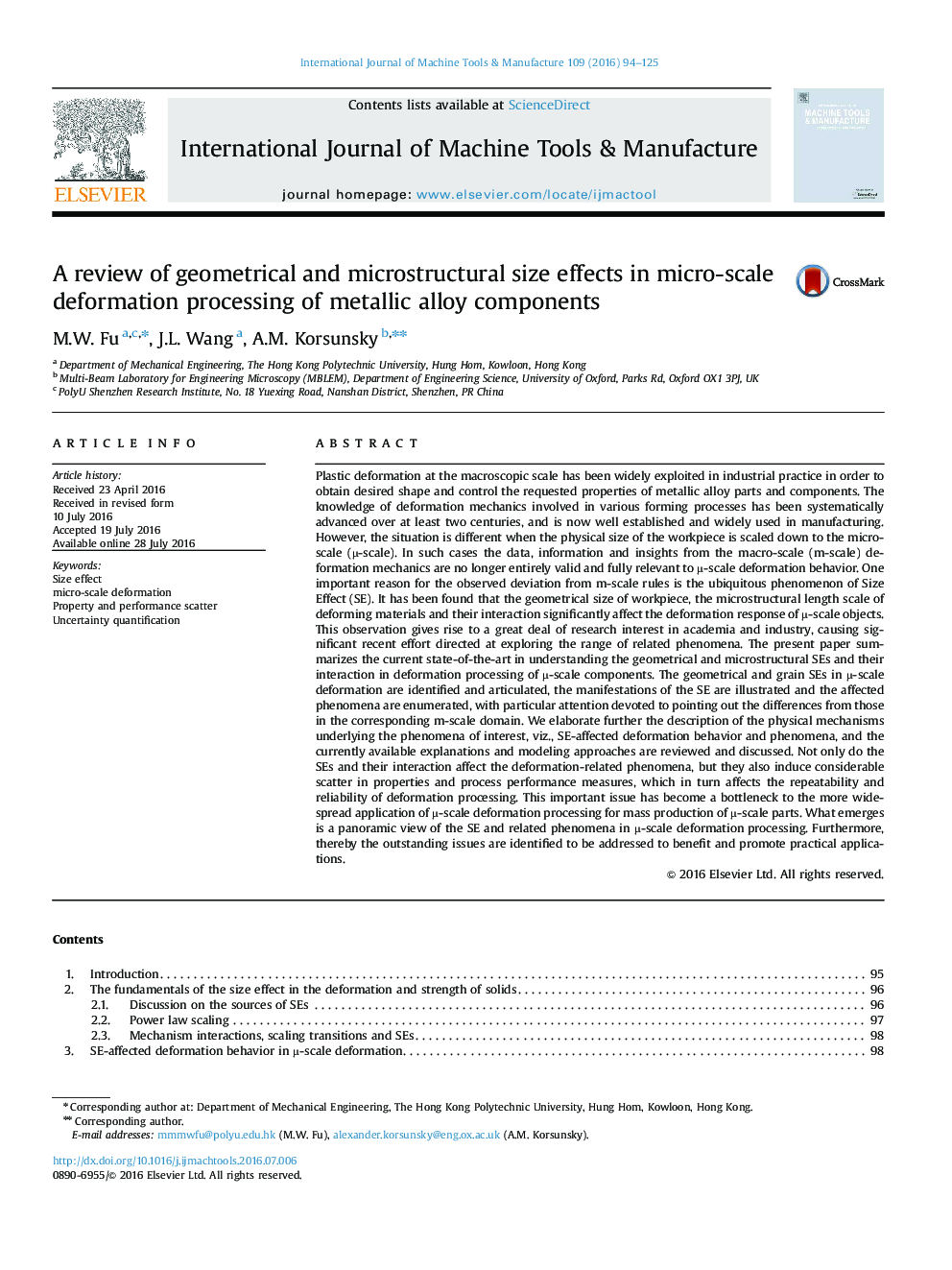| Article ID | Journal | Published Year | Pages | File Type |
|---|---|---|---|---|
| 780637 | International Journal of Machine Tools and Manufacture | 2016 | 32 Pages |
•Fundamentals of the size effects on the strength and formability of materials at the micro-scale are reviewed.•The origins of size effects are traced to the interaction between competing deformation mechanisms.•Characteristic lengths and their ratios are identified and their influence on the deformation behavior reviewed.•Modeling approaches to micro-scale forming processing are critically evaluated.•The scatter in the micro-forming performance and the quality of the manufactured parts are reviewed.
Plastic deformation at the macroscopic scale has been widely exploited in industrial practice in order to obtain desired shape and control the requested properties of metallic alloy parts and components. The knowledge of deformation mechanics involved in various forming processes has been systematically advanced over at least two centuries, and is now well established and widely used in manufacturing. However, the situation is different when the physical size of the workpiece is scaled down to the micro-scale (µ-scale). In such cases the data, information and insights from the macro-scale (m-scale) deformation mechanics are no longer entirely valid and fully relevant to µ-scale deformation behavior. One important reason for the observed deviation from m-scale rules is the ubiquitous phenomenon of Size Effect (SE). It has been found that the geometrical size of workpiece, the microstructural length scale of deforming materials and their interaction significantly affect the deformation response of µ-scale objects. This observation gives rise to a great deal of research interest in academia and industry, causing significant recent effort directed at exploring the range of related phenomena. The present paper summarizes the current state-of-the-art in understanding the geometrical and microstructural SEs and their interaction in deformation processing of µ-scale components. The geometrical and grain SEs in µ-scale deformation are identified and articulated, the manifestations of the SE are illustrated and the affected phenomena are enumerated, with particular attention devoted to pointing out the differences from those in the corresponding m-scale domain. We elaborate further the description of the physical mechanisms underlying the phenomena of interest, viz., SE-affected deformation behavior and phenomena, and the currently available explanations and modeling approaches are reviewed and discussed. Not only do the SEs and their interaction affect the deformation-related phenomena, but they also induce considerable scatter in properties and process performance measures, which in turn affects the repeatability and reliability of deformation processing. This important issue has become a bottleneck to the more widespread application of µ-scale deformation processing for mass production of µ-scale parts. What emerges is a panoramic view of the SE and related phenomena in µ-scale deformation processing. Furthermore, thereby the outstanding issues are identified to be addressed to benefit and promote practical applications.
Graphical abstractFigure optionsDownload full-size imageDownload as PowerPoint slide
